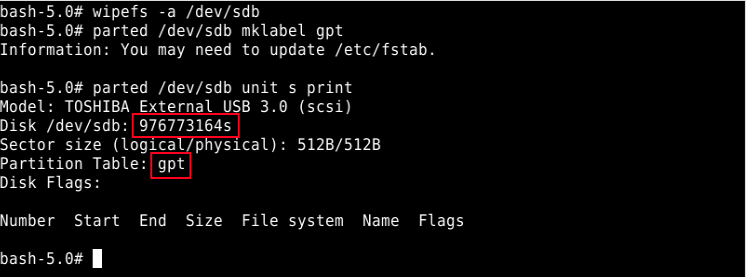

WIPEFS FORCE MANUAL
License, except for the contents of the manual pages, which have their own license The website is available under the terms of the GPL-3.0 Using mandoc for the conversion of manual pages. Package information: Package name: core/util-linux Version: 2.38.1-1 Upstream: Licenses: GPL2 Manuals: /listing/core/util-linux/ Table of contents The wipefs command is part of the util-linux package whichĬan be downloaded from Linux Kernel Archive. Restores an ext2 signature from the backup fileįor bug reports, use the issue tracker at. Note that by default wipefs does not erase nested partition In this case the wipefs scans theĭevice again after each modification (erase) until no magic string is When option -a is used, all magic strings that are visibleįor libblkid(3) are erased. (since v2.31) lists all the offset where a magic strings have been Magic strings on the device (e.g., FAT, ZFS, GPT). Note that some filesystems and some partition tables store more This feature can be used to wipeĬontent on partitions devices as well as partition table on a disk device,įor example by wipefs -a /dev/sdc1 /dev/sdc2 /dev/sdc. Is called as the last step and when all specified signatures from all Wipefs calls the BLKRRPART ioctl when it has erasedĪ partition-table signature to inform the kernel about the change. output columns-list in environments where a stable output is Always explicitly define expected columns by using

So whenever possible, you should avoid using default When used without any options, wipefs lists all visibleįilesystems and the offsets of their basic signatures. wipefs does not erase theįilesystem itself nor any other data from the device. Signatures (magic strings) from the specified device to make the Wipefs can erase filesystem, raid or partition-table When stateabsent, all other options but dev are ignored, and the module. If stateabsent, filesystem signatures on dev are wiped if it contains a filesystem (as known by blkid ). The standard procedure is the opposite: unmount the device before trying to use gparted.Wipefs - wipe a signature from a device SYNOPSIS If statepresent, the filesystem is created if it doesn’t already exist, that is the default behaviour if state is omitted.
WIPEFS FORCE ISO
Note: Be careful with the drive letter though! For USB sticks holding hybrid ISO images use the wipefs command which can be found in the util-linux package (Also VERY Dangerous). When used without options -a or -o, it lists all visible filesystems and the offsets of their signatures. wipefs does not erase the filesystem itself nor any other data from the device. The Following Approaches are VERY Risky!! Wipe a partition table with sgdisk ( ) - VERY Dangerous: description wipefs can erase filesystem or raid signatures (magic strings) from the specified device to make the filesystem invisible for libblkid. Replace $backup_file with the name of the backup file, which will be called wipefs-sdX-OFFSET.bak, use the OFFSET number in the seek option.

$ dd if=$backup_file of=/dev/sdX seek=$((OFFSET)) bs=1 conv=notrunc $ wipefs –all –backup /dev/sdX To restore the signatures: $ sgdisk –load-backup=sdX_table.bak /dev/sdX To make a backup while wiping the filesystem signatures use: $ sgdisk –backup=sdX_table.bak /dev/sdX To restore the table: Provides a nice selection screen for all identified USB / SDcard removable media.Īnd partition-clear performs exactly the next two tools while providing a degree of safety for you system it only allows the selection of removable devices. $ sudo mount -t ntfs-3g /dev/sdb1 /run/mount/usb -o force Ntfs-3g is replaced by your usb format (ie.
WIPEFS FORCE HOW TO
How To Fix A Broken USB Drive Using Linux (Lifewire).Repair corrupt USB Drive (Make Tech Easier).The following two articles offer excellent assistance in getting troublesome USBs (broken USBs) to function:


 0 kommentar(er)
0 kommentar(er)
